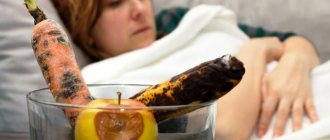Rice decoction for diarrhea is one of the proven folk methods for treating stool disorders. The product has a pronounced fixing effect on diarrhea due to the content of mucus that envelops the intestines. In addition, a decoction of rice grains is nutritious, contains the necessary amount of protein, carbohydrates, low fat, vitamins, and is used in dietary and therapeutic nutrition.
When can it be used
It is better not to start using even such a well-known remedy for diarrhea for children without a doctor’s recommendation. For diarrhea, rice congee is traditionally made for adults. It is also used in the treatment of diarrhea in children of any age, even infants. Its usual use in a child (as a nutritional component due to good absorption and improved intestinal function):
- As a supplement if there is a lack of breast milk. Rice (as well as oatmeal) broth is used in infants during the first months of life when supplementary feeding is introduced.
- It can be given when artificially feeding a child in the first year of life (in cities, such a decoction of rice is prepared in children's dairy kitchens). In artificially fed infants, a decoction of rice replaces feeding. You can buy ready-made rice water (with carrots) in the store or prepare it yourself.
The product can be used at home when diarrhea is the only sign of illness and the use has been agreed with the pediatrician. You can start giving it from the first day of stool disorder, continue to use it if the doctor recommends it and the baby tolerates the treatment well.
Nutritional features of bottle-fed children
When a child develops diarrhea, this inevitably leads to a lack of water. And it must be replenished. Therefore, you should give your baby water to drink more often. Another factor that needs to be taken into account with diarrhea is that beneficial microorganisms and vitamins are washed out of the intestines along with frequent stools. And the lack of nutrients should also be replenished.
During loose stools, it is not advisable to switch your child to other types of food. It is unknown how the intestines will react to dietary changes. The only thing that needs to be done is to switch the child to fermented milk mixtures. In addition, mixtures that exclude gluten are recommended.
If you have diarrhea, you need to feed your baby in small portions, but more often than usual.
In addition to switching to fermented milk formulas, if your baby has diarrhea, you should immediately consult a pediatrician. It is unknown what caused the diarrhea. If the cause of deterioration in health is an infection or viruses, then not only a change in diet is required, but also therapeutic treatment. Diarrhea is a dangerous disease, especially in young children, which must be treated with medication.
How to prepare the product
There are many options for preparing a remedy for children with diarrhea. The recipe depends on the age of the child - the older he is, the more concentrated the decoction can be made. For infants, rice water is prepared as follows. Taken:
- Rice cereal - 1 tablespoon.
- 200 g of water.
Pre-soak the rice in cold water for 12 hours. White round rice is used. Rice cereal is boiled for 30 minutes over low heat, the boiled water is added to the original volume. The finished solution is filtered and used warm. Store no more than a day in the refrigerator.
When a baby has diarrhea, the prepared decoction is used after each feeding instead of warm water. You can give it with a teaspoon, 15–20 ml at a time. You can feed your baby from a bottle with a nipple or from a disposable syringe without a needle. After diarrhea is eliminated, rice water is usually not given to the baby.

Rice water will help infants with diarrhea.
In case of diarrhea in a 6–8 month old child who is bottle-fed, rice water replaces all feedings for 12 hours. This temporary nutrition option can be used for a child under 3 years of age. For children over one year old, you can prepare the product in other ways:
To prepare a medicinal mixture for a child’s diarrhea, 100 g of rice cereal (pre-soaked) is boiled in 1 liter of water without salt or sugar (about 30–45 minutes). The resulting product is processed in a blender until smooth. This jelly-like mass is used for diarrhea per day in warm form in portions of 100–150 ml instead of food.
The recipe for making it with flour is even simpler. You can grind the flour using a coffee grinder from rice grains and prepare each portion fresh. For 200 g of cold water take 1 tsp. the resulting flour, stir gently and bring to a boil. The resulting “jelly” is used warm for diarrhea in children over one year old. For older children, you can make this medicinal “jelly” thicker by taking a tablespoon of rice flour per glass of water.
The advantages of using this remedy in children and adults are obvious. In addition to the therapeutic effect on intestinal motility during diarrhea, it envelops and protects the mucous membrane from damage. The product is a nutritional component, restores the lack of water, minerals, vitamins, and helps rapid recovery.
Its use is limited by individual intolerance and taste preferences. It is relatively rare that rice causes allergic reactions. Sometimes, for unknown reasons, it causes disgust in older children and adults (possibly of a psychological nature).
A decoction made from rice is successfully used for diarrhea in children. Its preparation is not difficult, you can do it once for the whole day. The main thing is that when using it you should not forget about other doctor’s recommendations. They may be different for each child.

In case of disorders of the gastrointestinal tract system and stool disorders, people should reconsider their diet. Their diet should contain easily digestible foods, which also contain a sufficient amount of useful minerals and vitamins. The ideal diet for people with diarrhea is the consumption of various types of cereals. The article discusses the most acceptable porridges and gives recipes for their preparation. You will also learn about which cereals are contraindicated for loose stools and for whom.
Is it possible to give formula milk for diarrhea?
Often the factor that provokes diarrhea in children is lactose intolerance. Therefore, when feeding with formula milk, some children have stool problems. This is due to the fact that the intestines lack enzymes that break down lactose. Lactose deficiency can be congenital or acquired, and most often occurs in newborns. And, as you grow older, it often goes away.

To understand whether it is possible to give formula for diarrhea, you first need to contact an experienced pediatrician. The doctor will find out the cause of the stool disorder and prescribe appropriate nutrition. It is not advisable to independently determine whether it is necessary to continue feeding the baby with milk formulas, so as not to provoke a deterioration in the baby’s well-being.
In children under one year of age, problems with stool begin after the introduction of milk formula. Infant formula should be introduced gradually, and it is important to monitor how the baby’s body reacts to it. It is possible that bowel dysfunction is simply a reaction to new food. In this case, there is nothing to worry about, but for peace of mind, you can consult a doctor.
How does porridge affect the gastrointestinal tract?
Porridges contain natural grains, which have a positive effect on the entire digestive system and improve the functioning of the gastrointestinal tract. That is why eating porridge is the most useful and safest for stool disorders.
And cereals such as buckwheat and oatmeal, among other things, contain a whole complex of sorbents that have a gentle effect on the digestive system and do not cause irritation of the mucous membranes of the stomach. The positive effects of cereals can be described point by point:
- Removal of waste and toxins. In case of poisoning, the intestines and stomach are filled with pathogenic bacteria, which in turn also actively multiply. The waste products of bacteria are toxins. Thanks to the astringent effect of porridges, they perfectly envelop harmful bacteria, neutralize toxins and prevent decay products from entering the bloodstream.
- Protection of mucous membranes. Once in the stomach, cereals break down and create an enveloping substance that covers the walls of the stomach and intestines. The harmful effects of harmful bacteria are reduced and local immunity is increased.
- Maximum saturation of the body with necessary elements. Cereals consist of complex carbohydrates, which means their digestion takes much longer than the digestion of any other easily digestible food.
Diet for diarrhea in children over one year old
Diet is very necessary when fighting diarrhea.
When treating intestinal infections in a hospital setting, doctors recommend abstaining from food altogether for the first 2 days. But if the child is hungry, then this recommendation may not be followed. Hunger is the best indicator of improvement. Portions should be small.
In this case, 6 fractional meals are better than 3 with an impressive portion. Do not overload your baby's digestive system. Dishes should have a comfortable temperature - maximum +35 degrees. Higher and lower temperatures will irritate the intestines and stomach. Allowed foods for diarrhea:
- Cereal soups - rice, oatmeal, buckwheat. No frying, no oil or hot spices. It is advisable to puree the soup using a blender. This will make the dish light and enveloping.
- Fresh berry jelly with a minimal amount of sugar. It is preferable to use blueberries.
- Baked vegetables and fruits, applesauce. These dishes restore the microflora of the stomach and intestines and contain vitamins and minerals.
- Crackers. Don't buy ready-made ones! Before drying, bread is often soaked in salt solutions, oils and treated with artificial additives. Take ordinary white bread and dry it in the oven. Do not use bread crumbs or any baked goods made from rye flour.
- From day 2, introduce fermented milk products into your diet - kefir, natural yogurt without sugar, narine with a fat content of no more than 2.5%. Cottage cheese is shown to be low in fat.
- From day 3, try introducing fresh fruits and vegetables into your diet in small quantities. Observe the toddler's reaction. If you experience colic, bloating or diarrhea, you were in a hurry with the fruit.
- Indicated for consumption is mashed potatoes. But without butter and milk - on water.
- During the same period, introduce meat and fish dishes, steamed or baked. Meat – chicken, beef or veal, turkey, rabbit. Fish – sea, white. Fatty meats and fish are not suitable for the diet of the little sufferer.
- Boiled eggs, steam or oven omelet are introduced on day 3 of the diet.
Foods prohibited for diarrhea:
- Fresh vegetables and fruits - the first few days until the condition stabilizes
- Fatty dairy products - cheese, fermented baked milk, full-fat cottage cheese, cream
- Sugar in any form, jam, marmalade, sweets
- Confectionery products – baked goods, cakes, pastries
- Pasta
- Store-bought and freshly squeezed juices
- Corn and pearl barley porridge
- Garlic, radish, radish
- Legumes and any fermentable foods
- Sauerkraut, any marinades and pickles
- Fatty meats
- Stew, canned fish
- red fish
- Soda
- Strong rich broths
- Mushrooms in any form
- Coffee
The following video will tell you more about diarrhea and diarrhea in a child:
https://youtube.com/watch?v=J00Wr4eDHAI
Approximate menu No. 1 for the day:
- Breakfast – steam or oven omelet, or low-fat cottage cheese, unsweetened tea with crackers
- Second breakfast (snack) – baked or stewed apples
- Lunch – chicken breast broth or carrot soup, mashed potatoes or pureed rice porridge with steamed meatballs or meatballs, or cutlets, blueberry jelly
- Afternoon snack – rosehip decoction with crackers, baked apple
- Dinner – pureed buckwheat porridge with beef stew. Tea
- At night - a glass of kefir or acidophilus milk
Approximate menu No. 2 for the day:
- Breakfast – boiled rice porridge with water or diluted milk, soft-boiled egg, tea, bread
- Snack – baked pears or bananas
- Lunch – baked chicken or turkey breast, 2 large baked potatoes, berry jelly, bread or croutons
- Afternoon snack – low-fat cottage cheese, rosehip decoction or chamomile tea
- Dinner – steamed fish cutlet or meatballs, oatmeal with water, stewed zucchini, tea
- At night – a glass of Narine or unsweetened yogurt
What cereals can you take for diarrhea?
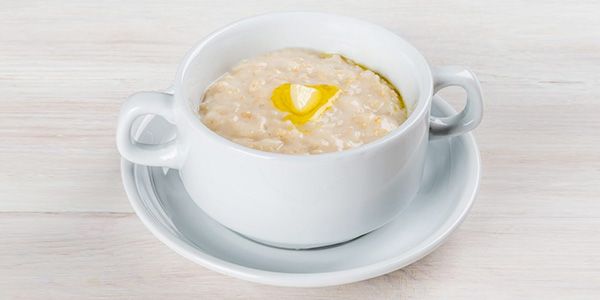
Oatmeal
Oatmeal is a very useful product for an upset intestine. But when using it, the following points should be taken into account:
- There is no need to give this porridge to small children during severe diarrhea. Adults can eat this cereal at any time: during bouts of diarrhea or after diarrhea.
- Subsequently, you should not overuse oatmeal. Eating oatmeal should not be more than three times a week.
- During frequent and prolonged diarrhea, the abuse of oatmeal is not recommended. For serious digestive disorders, this dish is best eaten after diarrhea. In this case there will be a positive effect.
Attention! Oatmeal is not able to stop loose stools and strengthen stool, but it perfectly cleanses the body of toxins and softens the gastrointestinal tract.
Buckwheat
Eating buckwheat has the following effects on an organism weakened by dehydration:
- gives vitality and restores energy after prolonged diarrhea;
- affects performance;
- has a normalizing effect on peristalsis;
- activates intestinal function;
- improves the functioning of the gastrointestinal tract;
- helps restore vitality after poisoning and severe intoxication of the body.
Buckwheat contains large amounts of potassium and organic acids. It contains a lot of oxalic, maleic and citric acid. It is these elements that the body loses during diarrhea and it needs to replenish these substances. Suitable for feeding adults and children. There are no age restrictions for buckwheat.
You can consume liquid buckwheat porridge both during and after diarrhea. Vitality increases and performance increases. It is good to eat this porridge for people who have suffered serious weakening of the body due to prolonged diarrhea and were treated in a hospital. A weakened body quickly recovers; this rule also applies to breastfeeding mothers and tiny children.
Worth considering! The greatest benefit will come not from boiled cereal, but from steamed cereal for several hours. In this case, all nutrients and elements remain in it. A dish prepared in this way has great energy value.
Millet
According to its characteristics, millet cereal is a rather coarse product, so it is quite difficult for the body to digest. It is not recommended to use it at the moment of stomach upset, but as a healing agent, millet porridge is an ideal food product.
It is recommended to soak millet cereals for several minutes before cooking, and then cook over low heat, or even better, steam in boiling water. It is better to eat it in the evening, since in the morning and daytime the body requires a lot of energy to digest difficult-to-digest food.
Rice
Rice porridge is always prescribed to patients with upset digestion as the most important food. Rice grains absorb all waste and toxins and remove these products from the body. Thus, the cause of diarrhea itself is eliminated and the intestinal microflora is restored. Among other things, rice grains have a cleansing effect. All pathogenic microorganisms are removed from the intestinal mucosa.
In order to get the maximum effect from eating rice porridge, you need to consider the following points:
- Rice porridge should be cooked over low heat to achieve a viscous consistency;
- You can pre-soak the grains for several hours, then the cooking process will take less time, and the grains will be saturated with moisture;
- After brewing the porridge with boiling water, you need to let it brew for 12 hours in a warm place.
It is important to know! A useful product is rice water. Do not throw out the water after boiling the rice. It is the consumption of this nutritious liquid before each meal that will help the stomach become involved in the digestion process and strengthen local immunity.
Principles of nutrition for diarrhea for children
The benefits come from products that gently envelop the walls of the stomach and intestines and do not irritate the receptors.
On the first day of diarrhea, only drinking is allowed, on the second - rice, porridge, dried bread, only from the third day can you begin more abundant feeding. Children should not be forced to eat during diarrhea; if they have no appetite, this may cause vomiting. The following rules must be observed:
- The amount of fluid should be 1–2 liters per day.
- Raw vegetables and fruits are excluded.
- Products should not activate peristalsis.
- The food should be warm.
- The use of choleretic products should be avoided.
Diet duration:
- Dietary nutrition is recommended until complete recovery and for another week after it as a preventive measure.
- If the causes of diarrhea are infectious, then as the symptoms decrease, the doctor will prescribe a stool test. If you get a normal result, you should stick to the diet for another week until complete recovery.
- Fiber-rich foods should be excluded from the diet for a week. As you recover, you can gradually introduce vegetables and fruits when adding them to your meals.
Table: foods that can be given to a child
Features of preparing dishes for the children's menu
- Porridge should be boiled in water and served in liquid form.
- It is recommended to consume only soft-boiled eggs in the amount of 2 pieces per day.
- Pasta no more than one serving per day.
- Milk can be used for preparing dishes, such as purees and drinks (tea, cocoa).
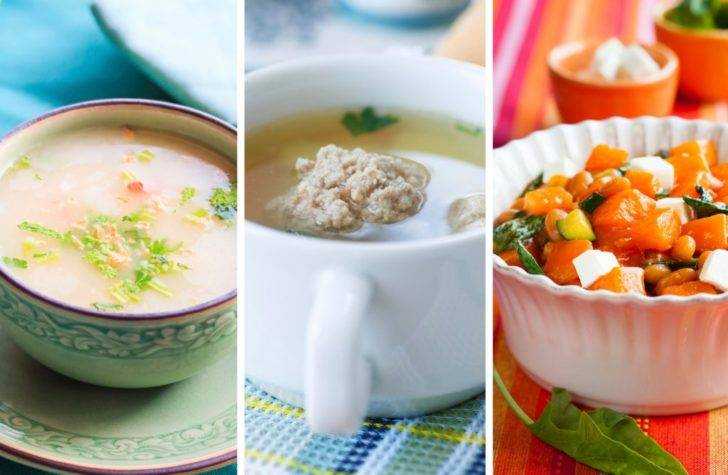
Liquid dishes served warm are preferred for the diet. - Cocoa is one of the recommended drinks for diarrhea due to the abundance of useful substances, the natural content of the antidepressant phenylephylamine, which allows the child to feel cheerful and his mood immediately improves. The drink helps the child’s body recover.
What foods should you not eat if you have loose stools?
All products that can cause irritation of the intestinal walls due to their structure or composition are prohibited. Difficult-to-digest foods also remain prohibited. And the laxative effect of pumpkin on digestion does not allow it to be included in the diet. Children should not be given:
- fatty meat and fish;
- legumes;
- cereals (barley, corn, wheat);
- seafood;
- canned food;
- smoked meats;
- vegetables;
- flour products;
- drinks: raw milk, juices, coffee;
- nuts;
- mushrooms;
- pickles.
A folk remedy for diarrhea, bird cherry should be used only after consultation with a doctor or not consumed at all. Its fruits contain the substance amygdalin, which breaks down into hydrocyanic acid and glucose. Hydrocyanic acid is a potent poison. It is important to maintain precise dosages.
Menu for the week: what to feed your baby
The menu, which is gentle on the intestines from excess load, is designed for 3 meals a day. It should be remembered that with diarrhea it is important to focus on the child’s appetite, without limiting it to a time frame. Before going to bed, you need to eat a light meal so that the intestines can rest at night, which will allow the self-healing mechanisms to start.
Table: weekly menu for children from 2 to 6 years old
Porridge recipes for diarrhea
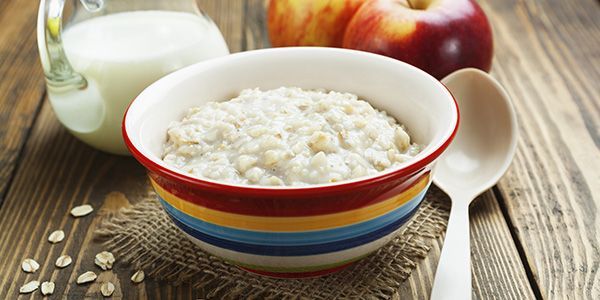
For diarrhea, it is best to prepare rice porridge following the following recipe:
- 50 g butter;
- 1 cup white rice;
- 4 large spoons of sugar;
- a pinch of salt;
- 5 glasses of fresh milk;
- 1 glass of clean boiled water;
- 80 g raisins;
- 2 tablespoons of liquid honey.
What to remove from your diet if you have diarrhea
During the restoration of intestinal functions during diarrhea, the following should be avoided:
- Fatty meats, offal, which include brains, kidneys, and liver.
- Any canned food, smoked products.
- Whole milk, lactic acid products with a high percentage of fat content.
- Eggs.
- Fermentable vegetables. These are cabbage, radish, rutabaga, beets, cucumbers. Canned vegetables are also not allowed.
- Mushrooms.
- Sour fruits and berries – sour apples, lemon, cranberries, gooseberries.
- Among baked goods, fresh pastries, black breads, cakes and pastries are not allowed, especially if they are made with cream.
- Carbonated drinks, milkshakes.
- Sweets.
Food must be boiled or steamed. The meals consumed during the diet should be fresh; they should not be given the next day when treating diarrhea.
What porridges and cereals are contraindicated

If you have loose stools, it is not recommended to consume the following cereals:
- Manna. Contains a huge amount of fiber and greatly increases intestinal motility. Thus, when consumed during diarrhea, the digestion process accelerates and the situation with loose stools can only worsen.
Reference Information! Semolina porridge should be consumed not during diarrhea, but during constipation. Regular consumption of semolina porridge will help with the painful passage of feces through the intestines and the inability to get them out.
- Dairy. Any porridge with milk should not be consumed if the intestines are weak. They are especially contraindicated for infants and children under 2 years of age. Milk is very difficult to digest and is absorbed by gastric juice. The load on the body is incredible. A person may feel worse because milk is not broken down sufficiently in the body and the intestines begin to suffer. This is expressed in spasms, pain in this organ and increased flatulence.
- Pea. It is not recommended to cook if you have diarrhea caused by an infection. In all other cases of stomach upset, peas can be eaten, but in small portions, and as an addition to other foods.
- Pearl barley. Barley grain contains many nutrients, but during acute attacks of diarrhea its use is not advisable. It is quite difficult to digest and absorb by the body, and can also aggravate already poor health and provoke even greater attacks of diarrhea.
- Barley. Although the beneficial properties of barley are quite widely known - maintaining hormonal levels and normalizing the functioning of the thyroid gland, if you have problems with the digestive organs and severe intoxication of the body, you should not eat it.
- Linen. Flax itself has a mucous structure and has an enveloping effect on the gastric mucosa. It does not hold the stool together, but promotes even stronger relaxation of the intestinal walls and provokes an additional urge to defecate.
For certain categories of people, the following recommendations can be made:
- Pregnant women and breastfeeding mothers should not eat oatmeal, wheat, semolina and pea porridge during diarrhea.
- Elderly people are not recommended to eat corn, millet and wheat cereals if they have a weakened intestine and frequent loose stools.
- Children under 12 years of age are contraindicated in consuming semolina, wheat, pea and oatmeal to avoid causing diarrhea.
What should you not eat if you have diarrhea?
You should avoid the following foods if you have diarrhea:
- Meat: fatty, with a golden brown crust. By-products - liver, kidneys, brains, etc. - are not desirable. Smoked meats, canned food, and rich broths are completely excluded.
- Fish: fatty, fried, smoked, marinated or canned.
- Dairy products: whole milk, heavy cream, whey-based carbonated drinks.
- Eggs: If they are hard-boiled or fried, or if they are poorly tolerated, causing abdominal pain and flatulence.
- Vegetables: white cabbage, fresh and pickled, beets, turnips, radishes and rutabaga; cucumbers Canned vegetables are not recommended - they usually contain spices and vinegar. The exception is puree for baby food. Horseradish, mustard, mushrooms are also prohibited.
- Fruits and berries: raw sour varieties (cranberries, lemon, currants, sour apples, gooseberries).
- Bread: baked goods, brown bread, cakes, especially with cream.
- Drinks: cold and carbonated, such as beer, kvass and lemonade.
Beneficial features
Thanks to this composition, rice (and, of course, medicine cooked on its basis) affects the body as follows:
- Plays the role of a sorbent, that is, it cleanses our body of toxins, waste, heavy metals
- Excellent for diarrhea
- In general, it has a very beneficial effect on the functioning of the gastrointestinal tract. This drug is even used for the complex treatment of peptic ulcers of the digestive system (for example, peptic ulcers of the stomach and duodenum)
- In addition, it has a positive effect on the human nervous system and strengthens it.
- Due to its fairly high calcium content, it improves the condition of hair, teeth and nails
- Strengthens blood vessels
- Promotes rapid tissue regeneration
Contraindications

Compote is an excellent and safe remedy for treating the disorder, however, it also has contraindications:
- If you are allergic to certain foods - prunes, dried grapes, dried apricots - they should be excluded from the diet.
- If you have diabetes, drinks containing even a small amount of sugar are prohibited.
- During pregnancy and breastfeeding, drinking dried fruit compote is allowed only if no side effects are observed.
Dried fruit compote is a safe and affordable remedy for treating intestinal disorders. The drink helps with both inflammation and infectious diseases, although in the second case it plays only a supporting role.
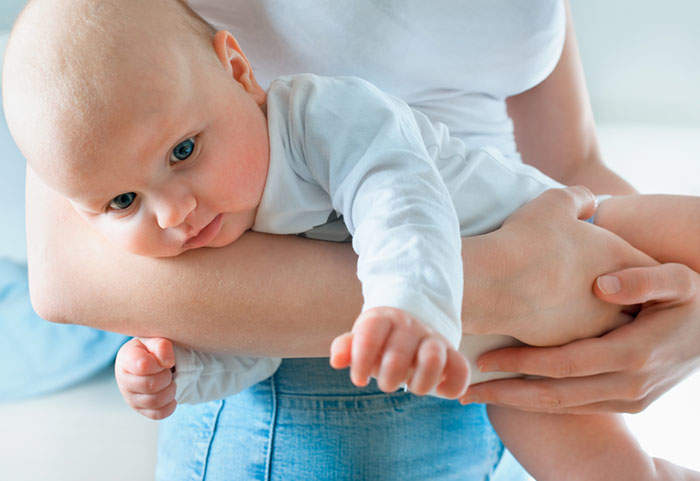
Frequent loose stools in children are, unfortunately for parents, not uncommon. Diarrhea is not a separate pathology, but only a symptom indicating a malfunction of the digestive system. Diarrhea occurs due to intestinal infection, poisoning, allergic reactions, dysbacteriosis, intolerance or individual sensitivity to certain medications. Treatment for the child should be selected by a doctor, and parents should always understand that a diet for diarrhea in children is mandatory, as it speeds up the restoration of the functioning of the digestive tract.
How does it work for diarrhea?
- Gently envelops the intestinal mucosa and relieves irritation. Protects it from external irritants
- Due to its astringent properties, it absorbs excess fluid from the intestinal lumen and inhibits peristalsis and reduces the frequency of the urge to defecate. Thanks to this, the body has much more time to form normal, dense feces. Find out on our website why a child may develop loose green stools.
- Thanks to its properties characteristic of the sorbent, it cleanses the gastrointestinal tract of toxins and harmful substances
- Significantly reduces fermentation processes in the intestines, and thereby prevents increased gas formation and flatulence
You can also find a recipe for rice water for diarrhea for adults on our website.
Prohibited foods for diarrhea
If feces are formed in liquid form, from the first day there is no need to give food that activates the functions of the stomach and intestines. They can increase diarrhea and make the situation worse.
Eliminate the following foods from your diet:
- cabbage, tomatoes, beets, melon;
- mushrooms;
- legumes;
- fatty meat, fish;
- prunes, dried apricots, grapes;
- citrus;
- milk, yogurt, sour cream;
- fruit drinks;
- rich soups, broths;
- barley, millet cereals;
- coffee, cocoa;
- sweets;
- nuts;
- chips, crackers.
Avoid cream, fresh vegetables and fruits. Juices, soda, and baked goods should be excluded. Reduce the amount of sugar you consume.
The doctor will tell you what diet a child should have after diarrhea. Without a doubt, you should not eat fried foods, marinades, or smoked foods.
How to cook
The recipe for rice water for diarrhea for a child is quite simple, but when preparing it you need to take into account several important nuances:
- Use round, unpolished, non-steamed grain. This rice has much more beneficial qualities.
- You only need to fill the cereal with clean water; the water that flows from the tap cannot be used.
- Do not add sugar or salt to the medicine
- Do not mix the decoction with milk
So, how to prepare rice water for diarrhea for a child?
Method 1
- We need a tablespoon of high-quality cereal and half a liter of clean water
- Wash the grain, pour into a saucepan with a thick bottom and put on fire.
- Bring to a boil, reduce heat and cook, stirring constantly, for 60 minutes
- Strain the resulting drug through cheesecloth or a sieve and cool to a temperature of 36-37 degrees.
- That's it, you can start treatment
Ideally, in order for the grain to release all its beneficial properties, it should be soaked before cooking, and after cooking, kept in water for a couple of hours. Of course, when help is needed urgently, all these rules do not matter much. But if you are already brewing the second portion of the medicine, they need to be taken into account.
The recipe for rice water for diarrhea in infants differs in that you need to take twice as much water for the proposed amount of rice - not half a liter, but a liter.
Method 2
To cook rice water for diarrhea for a child in another way, we need an ingredient such as rice flour. You can buy it in the store, or you can prepare it at home. To do this, heat a few tablespoons of cereal in a frying pan without oil until golden brown, then cool and grind in a coffee grinder.
- We need one hundred grams of this flour and 1 glass of water
- Combine the ingredients and mix thoroughly so that there are no lumps
- In a separate saucepan, bring another 4 cups of water to a boil and pour in our mixture in a thin stream, remembering to continuously stir the resulting liquid.
- Cook over low heat for 5 minutes, then cool and give to the child
The role of fruits in the treatment of diarrhea
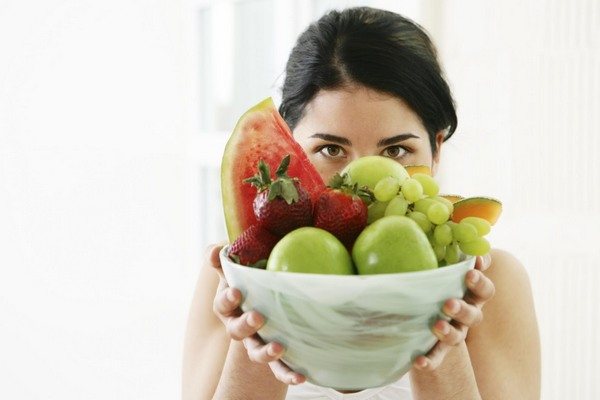
A patient suffering from diarrhea needs to recuperate. This task is performed by properly selected nutrition. We value fruits for their composition: minerals, dietary fiber, a huge number of vitamins.
The high benefits of their use depend on proper preparation. Most fruits can be given to patients with diarrhea only in processed form. Otherwise there will be the opposite effect.
What fruits can you have for diarrhea? The first thing you need to do is stop the diarrhea. The fixing properties of fruits help! It is worth choosing fruits with an astringent effect: apple and banana, pear and quince, persimmon and pomegranate. They can be boiled or baked and pureed, or prepared into compote. It will not only bring nutrients, but also provide the necessary fluid.
Kissel is known for its healing and protective properties. It seems to cover the intestinal walls with a film, softening irritation.
Banana and persimmon
What fresh fruits can you eat if you have diarrhea? Persimmon and banana are the only fruits that can be eaten during a disorder without additional processing.
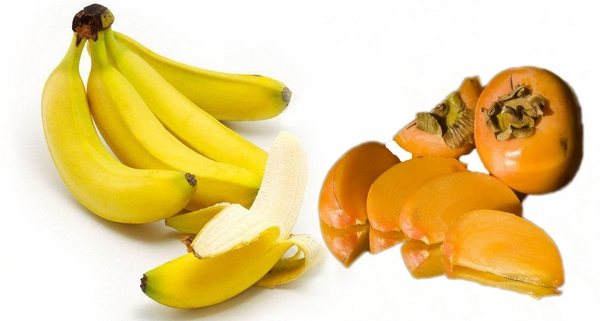
The properties of these fruits allow them to be used without prior preparation:
- The coarse fiber content is minimal.
- Strong fixing effect.
- They are natural analgesics. Relieve pain without the use of drugs.
- Antibacterial properties speed up the healing process. Substances that make up fruits fight pathogenic environments.
Rice and banana balls. Rice and banana hold together well and do not irritate the intestines. A simple and tasty recipe will help restore strength and have healing properties.
Boil one glass of rice cereal until it becomes a mushy consistency. Mash the banana with a fork or in a blender. Combine ingredients and roll into small balls. Place in the refrigerator for 1 hour. When the balls have hardened, they can be eaten. For those with a sweet tooth, you can add a little honey.
Apple and pear
These are the most common fruits included in the diet from the first day of illness. This is due to the many beneficial properties of these fruits.
Pectin contained in apples is the main active ingredient in most medications against diarrhea. This component fights bacteria and has an astringent effect.
The pulp of the fruit increases the protective properties of the body, stabilizes the gastrointestinal tract, and fights the pathogenic environment.
A large percentage of tannins are found in wild pears. Its use will naturally reduce the urge to go to the toilet.
Pears and apples must be boiled or baked. Otherwise, there will be diarrhea from fruits and other accompanying symptoms: bloating, acute pain, heartburn. The fruits cause increased peristalsis and create associated unpleasant symptoms.
Grape
Juicy bunches are rich in vitamins and nutrients. This berry boosts the immune system, restores metabolism, has an astringent effect, and heals the nervous system.
Grapes can be included in the diet for diarrhea, but only if they are heat treated, for example, by making a compote or decoction. It's very easy to prepare. Berries, stems, leaves are dipped in boiling water and cooked for about a quarter of an hour. The broth must be strained and cooled. The patient is given 200–250 ml every 3–4 hours. The drink has a strengthening effect and restores the natural functioning of the intestines.
Pomegranate
This bright juicy fruit is a powerful vitamin cocktail. The substances that make up pomegranate have an astringent and antioxidant effect. Minerals (potassium, zinc, iron, calcium).
For diarrhea, it is not the fruit itself that is consumed, but its peel. Pomegranate skin contains the highest concentration of important substances. For treatment, the skin is boiled.
Preparing dried peels is very simple. To do this, the skin is separated from the grains and dried (in the oven, in the open sun, in a fruit dryer).
Pomegranate is not used in the treatment of acute pathological conditions. If the symptoms include high fever, vomiting, severe colic, it is better to avoid pomegranate decoction.
There are contraindications for consuming pomegranate during an intestinal disorder:
- exacerbation of kidney disease;
- allergy to the fetus;
- liver diseases;
- violation of the integrity of the colon;
- bleeding of internal organs.
Cranberry
Cranberries have extraordinary restorative properties. The secret lies in the unique composition of the berries. A large number of vitamins, organic acids and microelements activate the body's defense systems.
You can make jelly, compote, and fruit juice from cranberries.
The properties of the berry are multifaceted: restorative, antibacterial, analgesic, antiviral, antipyretic. The diuretic effect is associated with a high content of pectin.
Blueberry
Small dark blue berries have medicinal properties. They contain minerals and vitamins. Potassium, phosphorus, magnesium, sodium, dietary fiber, iron and 6 types of vitamins. Blueberries are a unique berry. It perfectly combines beneficial and binding substances.
Dried flowers in your home medicine cabinet will help the whole family in the fight against an unpleasant illness. Smooth, even berries are dried and stored in fabric or paper bags. You can dry leaves or small bushes with berries. A decoction is made from their preparations and tea is brewed.
Dried blueberries can be stored for no more than 2 years.
Viburnum, blackberry and bird cherry
These berries have a good binding effect. In folk medicine they are used in decoction.
Viburnum removes toxins, improves immunity, and has an astringent effect (contains pectin and tannins). Minerals restore the disturbed water-salt balance.
Blackberries help restore the metabolic process and supply important microelements.
Bird cherry is a good fixative. Fills tissues and cells with important minerals, helps restore intestinal functions.
A handful of berries is poured with hot water (about 1 glass), then brought to a boil and simmered over low heat for a quarter of an hour. The sour taste can be softened with honey. Drink before meals, about half an hour. Frequency: every 3 hours.
How to give
How to give rice water to a child with diarrhea? The basic rule is little by little, but as often as possible. The volume depends on the age of the child.
- Infants should be given half a teaspoon of the product 4-5 times a day
- Babies up to one year old are prescribed 200 ml of the drug per day, which should be divided into 4-5 doses
- Older children – 50 ml every three hours
After the result is noticeable (frequent bowel movements stop), the treatment should be completed. There is no need to continue taking it to consolidate the result, as this may lead to stool retention.
How to give rice water for diarrhea to a baby? In principle, the taste of this diarrhea remedy is quite neutral, and many children willingly drink it from a bottle. If you have difficulty with this, try using a spoon or syringe without a needle. As for the syringe, fill it with the required amount of decoction and squeeze it onto the inner surface of the baby’s cheek. As a last resort, you can add a little sugar, but provided that the child is more than six months old.
You can find out the causes and treatment of diarrhea and fever in a child by reading another of our articles.
Recipes for healthy compotes
What compote to drink for diarrhea depends on the cause of its occurrence. But there are also universal products from which you can make a tasty and healthy drink. If we highlight them by place, then in first place will be apple compote, made from dried raw materials.
It is also recommended to prepare pear mixtures for diarrhea. Prunes are acceptable if they do not cause a violent reaction in the body. For many, this product leads to increased distress due to its cleansing properties.
Useful information: What can children drink with diarrhea without harm to health?
Apple compote recipe
Apple compote is very effective for diarrhea, as it contains the maximum amount of pectin. This substance collects and removes harmful substances from the body well. Additionally, the composition will contain plant fibers and fiber, and they have the best effect on the functioning of the gastrointestinal tract. Prepare a delicious drink like this:
- Take 300 g of dried apples for 2 liters of boiling water;
- as soon as the broth boils, reduce the heat and leave for 30 minutes at the minimum level;
- You need to take a warm or cool decoction, but not boiling water.
The drink has its best taste some time after infusion. You can sweeten it with fructose or honey, but not with sugar.
Pear compote
A decoction made from tart pears will help relieve diarrhea. They have maximum benefits, but a sweet Conference is not suitable for this. The pear contains arbutin and other substances that destroy microbes and hold together the masses of digested food. Positively affect the entire functioning of the gastrointestinal tract:
- For 500 ml of boiled water you need to take 6 small pears, or 2 times less by weight of dried fruits;
- Boil for 30 minutes after boiling over low heat and take throughout the day.
Before cooking, it is recommended to soak dried fruits for at least 4 hours. No sugar is used.
Raisins for the treatment of diarrhea
Natural raisin compotes for diarrhea do not lead to side effects and are used at home to quickly eliminate the pathology. Products based on this berry are included in the group of the best natural preparations for the treatment of diarrhea. Raisins improve the functioning of the gastrointestinal tract, suitable for adults and children. Even nursing women can consume raisin compote if their infant develops an unpleasant pathology. Prepare a delicious drink like this:
- To prepare, you need to boil 1.5 liters of water, and pre-soak 150 g of sweet raisins for an hour;
- pour in the berries and put with water on low heat, cool 15 minutes after boiling;
- You need to take 100 ml every 4 hours.
You should not drink compote more often, as raisins can lead to fermentation in the stomach and increase the unpleasant pathology.
Advice! Add a handful of washed dried apricots or prunes to the compote, and it will acquire new shades of taste and benefits.
If raisins do not help, you should remove compote from your diet and review your daily menu.
Useful information: Folk remedies for diarrhea in adults: top 7 fast-acting ones
Recipe with dried apricots
Compote of dried apricots for diarrhea has the same great benefits as other dried fruits. It contains a lot of vitamins and potassium, which is most quickly washed out of the body during diarrhea. However, you need to drink very little of it - fiber and pectins can provoke additional cleansing of the body.
A compote made from orange fruit is also indicated for diarrhea in a child - take 200 g of the fruit, soak it for 4 hours, then pour in 1 liter of water and bring to a boil. Immediately you need to reduce the intensity and cook the compote for 30 minutes. Give 0.5 cups to children over 3 years old 3 times a day. Adults can drink up to 5 times a day.


